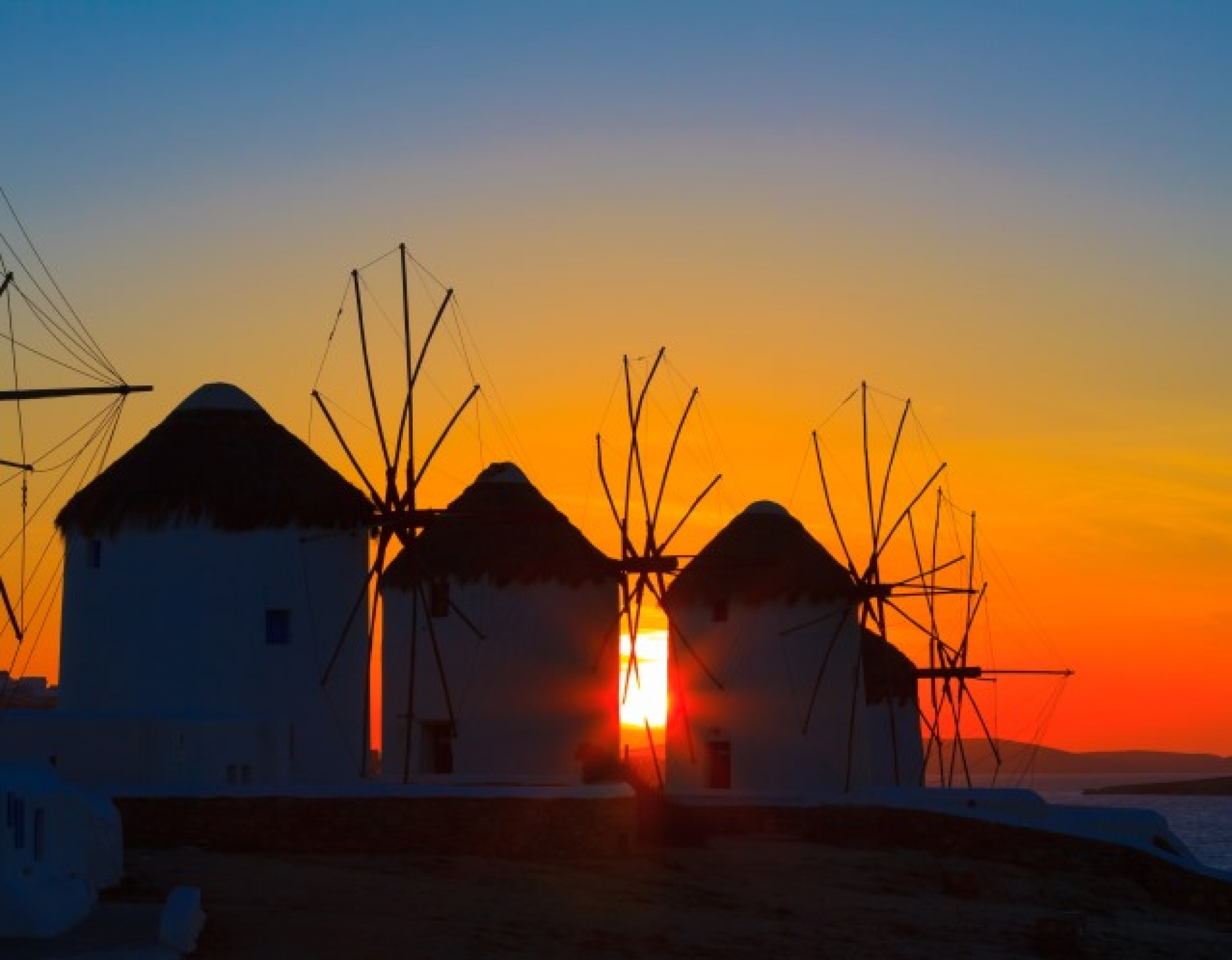Mykonos, just like the entire Greece, has its own haunting myths. According to one of them, the island was a rock thrown by god Poseidon in order to bury the Giants underneath, when the Clash of the Titans was taking place. Another myth has it that Mykonos took its name from the namesake son of the king of Delos, Anio.
Archaeological research and the findings in Ftelia reveal that the island of Mykonos was first inhabited around the fifth millennium BC. The Phoenicians and the Carians are considered to be the first settlers, while the island would later be colonized by Ions coming from Attica and led by Hippoclus.
In antiquity the fate of Mykonos was inextricably linked to that of the sacred island of Delos. Delos' prime actually brought on Mykonos a great financial gain, as it functioned as a station for visitors before arriving at Delos, and after its destruction Mykonos was also driven into obscurity.
After the subjugation of Athens to the Macedonians, Mykonos follows the course of the rest of Greece and is set under Macedonian,then Roman and then Byzantine rule.
Mykonos becomes the property of the Venetian family Gkizi when on Franks on 1204, and remains in their hands until bequeathed to the Republic of Venice, because of the absence of descendants. In 1537 Mykonos is despoiled by the notorious Barbarossa. A large number of residents is led into slavery, while those fleeing are now settling in Tinos.
During the Ottoman rule, Mykonos, exploiting the privileged status enjoyed by the Cyclades, prospers. The island grows economically thanks to shipping, trade and piracy, being a base for the notorious pirates of the Aegean.
During the "Orloff revolt" Mykonos is conquered by the Russians, who keep hold of it from 1770-1774 until the Treaty of Küçük Kaynarca.
With the outbreak of the 1821 revolution, Mykonos joins its fleet with the rest of Greece's against the Turks. Heroic figure of the era was the legendary Manto Mavrogenous, who provided her entire fortune to the needs of the Greek Nation's struggle. The liberation from the Turks finds Mykonos as a typical Cycladic island, until the mid-20th century. It is then discovered by the first visitors-tourists, who fall in love at first sight with the place and soon convert it to the top tourist destination it is today.



